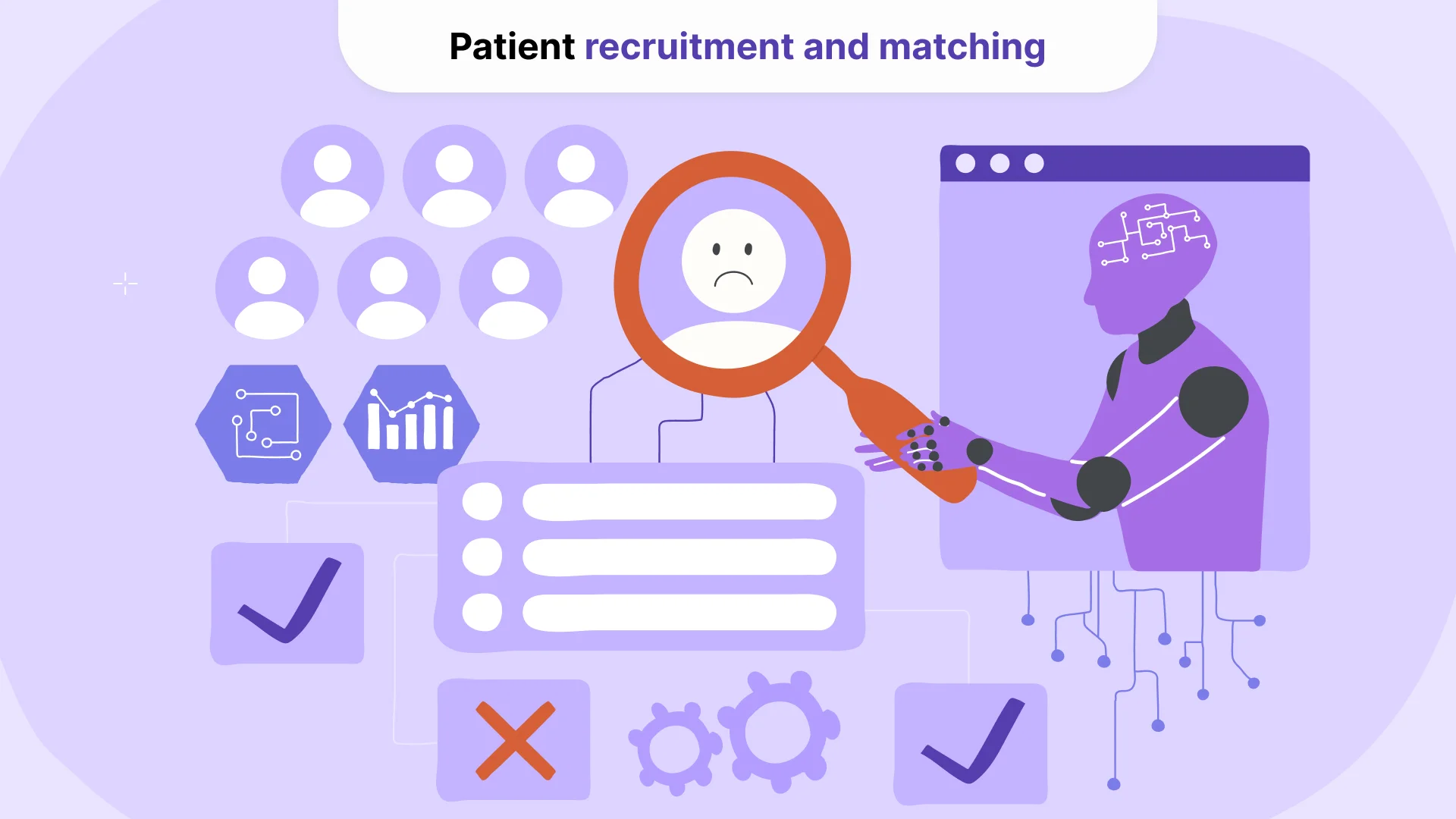

Clinical Trials Are Broken, But AI Might Just Fix What Matters
Every year, drugmakers spend billions to run clinical trials that are too slow, too narrow, and too expensive to scale. Recruitment takes months. Protocols get amended mid-study. Entire trials get scrapped because of incomplete data or low enrollment. Meanwhile, countless patients — especially from underrepresented groups — never even make it through the screening stage.
In this chaos, artificial intelligence isn’t just a buzzword. It's becoming the toolkit pharma didn’t know it needed.
By 2023, AI-driven automation tools began significantly reducing clinical trial setup times — in some cases by as much as 50%. These technologies have been particularly impactful in decentralized and hybrid trial formats, helping sponsors streamline deployment, coordination, and data management.
At the same time, predictive modeling solutions are increasingly being used to simulate trial outcomes before the first patient is enrolled, enabling better protocol design and resource allocation. Some of the most advanced implementations now include the creation of synthetic control arms based on real-world historical data, helping reduce reliance on traditional placebo groups and making trials more patient-centric.
This article explores where AI is actually moving the needle in trials today, what’s still holding it back, and how the next decade might look if we get the blend of data, tech, and trust just right.
Where AI Is Already Making an Impact
AI is slowly transforming every corner of clinical research. But in a few high-friction areas, it’s already solving problems humans have struggled with for years.
Patient recruitment and matching

One of the most persistent bottlenecks in clinical trials is patient recruitment — a challenge that leads to delays, budget overruns, and in some cases, trial termination. Traditional recruitment methods often rely on site-based outreach and manual prescreening, which limits diversity and slows down enrollment.
RxE2 is reimagining this process by decentralizing clinical trials and using data intelligence to identify, engage, and manage patients directly through community pharmacies. Their model not only simplifies recruitment but also integrates medication dispensing into the trial workflow — streamlining a process that traditionally required multiple intermediaries. By embedding clinical research into everyday healthcare touchpoints, RxE2 opens the door to more inclusive trials and faster participant onboarding.
This model addresses two major barriers at once: it reduces geographic and logistical friction for participants, and it lowers the operational burden on sponsors and CROs.
Protocol Design and Scenario Modeling
Designing a clinical trial protocol has always been a mix of scientific rigor and educated guesswork. Will the endpoints make sense? Is the timeline realistic? What dropout rate should we expect? In the past, trial designers relied heavily on historical intuition — or worse, assumptions.
Today, AI is shifting this process from reactive to predictive. Sponsors can now simulate trial outcomes based on vast amounts of real-world data — patient journeys, comorbidity profiles, and known drug interactions. This allows them to test different protocol designs virtually, identify risk factors, and anticipate failure points before activating a single site.
Internal analyses from leading CROs suggest that over 90% of trial protocols contain some form of ambiguity — from unclear endpoints to redundant procedures. AI-powered analytics can flag these inconsistencies early, reducing the number of protocol amendments and accelerating trial startup.
Real-Time Monitoring and Data Integrity
Once a trial begins, the real challenge is operational: monitoring safety signals, spotting data anomalies, and minimizing dropout. Traditionally, issues would only surface weeks later during data cleaning. AI now enables real-time detection.
Machine learning algorithms can identify deviations from protocol, patterns in missing data, or unusual site activity — all in near real time. This proactive oversight allows sponsors to act faster, improve data quality, and avoid costly delays or regulatory flags.
Personalized Trials and Adaptive Design
For decades, clinical trials have been built around rigid protocols — fixed endpoints, fixed timelines, fixed assumptions about who will respond and who won’t. But biology isn’t fixed. Patients don’t behave according to plan. And neither should trial designs.
That’s where adaptive trials come in — and AI is making them smarter, faster, and more responsive than ever.
Real-time response tracking
Adaptive trials allow sponsors to modify a study while it’s still running — adding or dropping arms, adjusting dosages, reallocating patients. But doing this well requires data. Lots of it, fast.
AI enables real-time analytics pipelines that track how patients are responding and detect early signs of futility or success. In oncology, for instance, machine learning models trained on tumor progression patterns can flag non-responders weeks before traditional markers would catch it, allowing protocols to pivot instead of wasting time and money.
N-of-1 logic at scale
Beyond large group trends, AI opens the door to what used to be unthinkable at scale: n-of-1 trials — personalized mini-trials tailored to individual patients.
Startups are experimenting with models that dynamically adapt treatment plans based on how each patient reacts, not just how the average patient should react. This pushes clinical research closer to precision medicine — not just in therapy, but in trial logic itself.
Smaller trials, smarter data
Traditional wisdom says: bigger trials = better data. But AI flips that logic. If algorithms can accurately model disease trajectories or compare with synthetic controls, smaller cohorts can still produce statistically strong insights.
For rare diseases, pediatric trials, or personalized oncology, this is a game changer. It means companies no longer need to wait years to recruit hundreds — they can run faster, targeted trials with adaptive logic that continuously learns and adjusts.
Synthetic Control Arms and Real-World Data Integration
If there’s one thing patients hate about clinical trials, it’s being randomized into the placebo group. It’s ethically complicated, logistically expensive, and for certain diseases, borderline inhumane.
Enter synthetic control arms: AI-generated comparator groups built from historical clinical data or real-world datasets, designed to stand in for actual control patients.
This approach isn’t sci-fi — it’s in use.
Unlearn.AI, for example, uses deep learning to create “digital twins” of trial participants, predicting how a patient likely would have responded without treatment. These twins act as statistically matched controls, reducing the need to randomize real patients into placebo groups. In a recent Alzheimer’s study with J&J and AbbVie, Unlearn enabled a 33% reduction in control-arm size without compromising statistical power.
Real-world data (RWD) plays a big role here, too. Claims data, EHRs, registries — once siloed, now fuel machine learning models that simulate control outcomes across age, gender, race, and comorbidities. Startups are building platforms that use this data to benchmark drug performance, supplement trials, or even serve as external comparators in regulatory filings.
But while the FDA and EMA are warming to these methods, barriers remain. Bias in historical data, data provenance concerns, and challenges around explainability make regulators cautious. The promise is real — but so is the scrutiny.
Looking Ahead: The Quiet Reinvention of Clinical Research
AI won’t turn clinical trials into a fully automated pipeline — but it’s already changing how drugs are developed, tested, and validated. Over the next 5–10 years, we’ll likely see:
Smaller, smarter, more targeted trials, especially in oncology, rare diseases, and gene therapy
More hybrid models that combine in silico simulations with adaptive trial arms
Greater collaboration between tech startups, CROs, and regulatory bodies
An infrastructure shift — where digital twins, predictive analytics, and real-world evidence aren’t “nice to have” but standard operating tools
The future of trials isn’t AI-run. It’s AI-aware, where human expertise and machine intelligence co-create better, faster, more inclusive research.
It’s not about cutting corners. It’s about cutting waste.
Not about replacing scientists. But about giving them better tools.
If done right, this isn’t just a tech upgrade. It’s a chance to rebuild trust in the research process, bring in more representative patients, and finally match the speed of innovation with the speed of validation.
Tell us about your project
Fill out the form or contact us

Tell us about your project
Thank you
Your submission is received and we will contact you soon
Follow us
